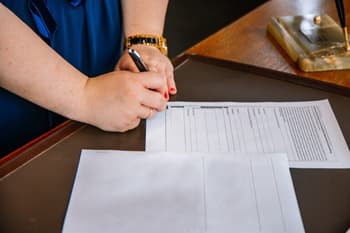Whether you are a business owner, company director or marketing manager, it is crucial to understand the importance of registering your trade mark. Trade mark registration gives you legal protection over the use of your sign. This article outlines seven tips for you to consider when choosing your trade mark.
What is a Trade Mark?
A trade mark is a sign that consumers use to recognise where a product or service comes from. Essentially, it is a way for people to tell the difference between a business’ goods and services from another. If you own or manage a business, your trade mark is your brand.
Why Obtain a Trade Mark Registration?
Trade mark registration gives you legal protection to the exclusive use of a sign (for example, a word, phrase, shape, colour or sound), used in relation to goods or services. Importantly, under the Trade Marks Act 1995, if you have successfully registered your trade mark, you can stop other people from using your brand for the same or similar products or services.
This prevents your competitors from using your trade mark in relation to their inferior quality goods or services, and causing damage to your reputation. It also assists consumers in differentiating your goods or services from your competitors.
Continue reading this article below the formCan You Register Your Trade Mark?
The Trade Marks Act 1995 provides that trade marks must satisfy certain requirements for registration. Typically, trade mark objections arise because the trade mark is the same or considered too similar to another trade mark already on the register.
Another hurdle to overcome is when IP Australia does not see a trade mark as inherently capable of distinguishing the goods and services specified in the application. This means that IP Australia will not register a trade mark that it considers too descriptive or generic. The law will not give a single trader a monopoly to use words that other traders need to use when describing or marketing their goods or services.
Trade marks capable of distinguishing on face value mean that you do not need to provide evidence of use to show that your trade mark distinguishes your goods and services. For business owners, this also means that you can more efficiently obtain trade mark registration.
So, how do you avoid these objections when choosing a trade mark? We outline some tips below.
1. Invented Words
An invented word is an ideal trade mark. This is because it is unlikely to be too generic or similar to another already on the register. For example, MAFIO or HAPTITUDE. Importantly, invented words do not extend to misspelt, or joined words.
Having a unique trade mark can make it easier for customers to remember your brand, which is important for effective marketing. Also, a unique trade mark is less likely to cause issues with other trade marks that are already being used. As a general rule, anything that indicates the kind, quality, quantity, intended purpose, value, geographical origin, or some other characteristic of goods or services will be considered descriptive.
2. Slogans
Slogans are catchy, memorable and can communicate relatable values and ideas to consumers. When it comes to registrability, unique slogans are more likely to distinguish goods and services than single words or short phrases. Familiar examples of registered slogans include Nike’s “Just Do It” and Nestle’s “Have a Break, Have a Kit Kat.”
If you are thinking about registering a trade mark for a slogan, consider these recommendations:
- keep the slogan brief and impactful;
- highlight what makes your product, brand, service, or campaign unique;
- strive for creativity, whether through a clever play on words or a catchy phrase, to make it memorable;
- make sure the slogan truly reflects your brand or business;
- contact LegalVision to conduct a thorough trade mark search to ensure it is not already in use; and
- choose the trade mark class or classes thoughtfully based on the nature of your goods or services.
3. Combinations of Words and Numbers
Combining words and numbers can create a unique trade mark unless the combination is commonly used in relation to the goods themselves. For example, wines combining the words SINCE or EST and a particular date (since 1985) are not considered capable of distinguishing the wine because it is commonly used to refer to a wine’s vintage.
You should view each combination in the context of the goods claimed and based on appropriate research. If the combination holds a particular meaning related to the claimed goods, IP Australia may reject it on valid grounds.
4. Uncommon Last Names
If you provide professional services and your client base is derived from word-of-mouth, it can be worth registering your last name as a trade mark.
Notably, uncommon last names are more likely to be accepted as trade marks. Generally, uncommon last names consist of last names that occur less than 750 times on the Australian electoral roll.
5. Device Trade Marks
Trade marks that consist wholly of graphic or picture elements are called device trade marks. Device trade marks are often considered capable of distinguishing unless the device consists only of a graphic representation of the goods or services for which the applicant uses the trade mark.
For example, a picture or a graphic representation of an apple would be a good trade mark for computers, but not for fruit.
6. Composite Trade Marks
Composite trade marks contain at least one word and a picture or graphic. Logos are good trade marks because they are memorable and can easily convey several messages in one sign.
Accordingly, there is a distinction between single trade marks and composite trade marks. A composite trade mark consists of multiple elements combined, while a single or regular trade mark consists of just one individual element.
7. Non-Traditional Trade Marks
When used in trade, trade marks are badges of origin. Non-traditional trade marks consist of sounds, colours, smells, shapes, scents, movements and aspects of packaging. Typically, it is harder to register non-traditional trade marks on its own. However, it may be possible to register a combination of two non-traditional marks with words or logos or even two non-traditional marks.
For example, consider Nestle’s application to register Kit Kat’s chocolate finger shape and Tiffany & Co’s registration of its iconic little blue paper bag.

This guide explains the essentials of trade marks and the steps required to register a trade mark.
Key Takeaways
Registering a trade mark gives you exclusive rights to use, sell or license your trade mark. You also have legal avenues to stop another person from infringing on your trade mark, providing valuable protection for your brand. When choosing a trade mark, remember that it must be distinctive and unique. Signs that are the same or too similar to another already in use may be rejected by IP Australia.
For more information about choosing a trade mark for your business, our experienced trade mark lawyers can assist as part of our LegalVision membership. For a low monthly fee, you will have unlimited access to lawyers to answer your questions and draft and review your documents. Call us today on 1300 544 755 or visit our membership page.
We appreciate your feedback – your submission has been successfully received.











